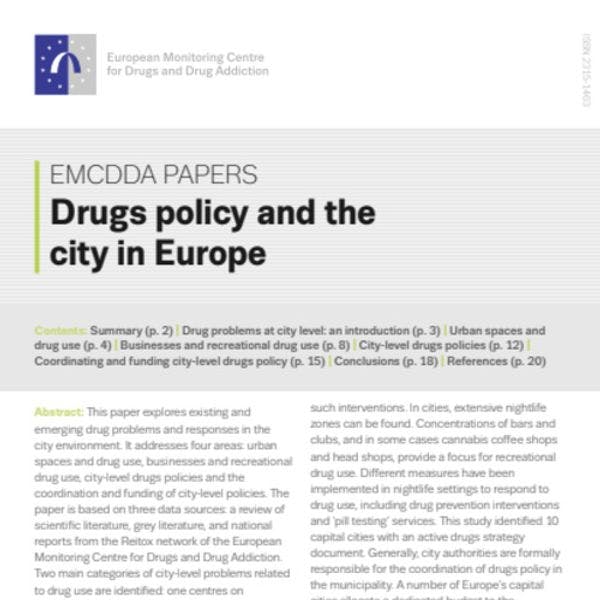Drugs policy and the city in Europe
Drug problems often emerge, and are most acutely felt, in urban environments, making Europe’s cities a valuable observation window on new drug trends. In its latest report, the EU drugs agency (EMCDDA) looks at drugs in cities across Europe, revealing how some cities are developing drug strategies of their own.
The European Union is one of the most urbanised areas in the world and its cities are set to become more densely populated. Currently 73 % of the EU’s population resides in cities and this is projected to increase to 82 % (or 30 million new residents) by 2050 (2). The new EMCDDA analysis,Drugs policy and the city in Europe, shows how modern cities play host to a diverse set of drug using populations and related health, social and security problems. The report identifies 10 European capitals with a dedicated drug strategy: Berlin, Bucharest, Copenhagen, Helsinki, Lisbon, Madrid, Prague, Stockholm, Vienna and Warsaw.
Keep up-to-date with drug policy developments by subscribing to the IDPC Monthly Alert.
Downloads
Topics
Related Profiles
- European Monitoring Centre on Drugs and Drug Addiction (EMCDDA)
